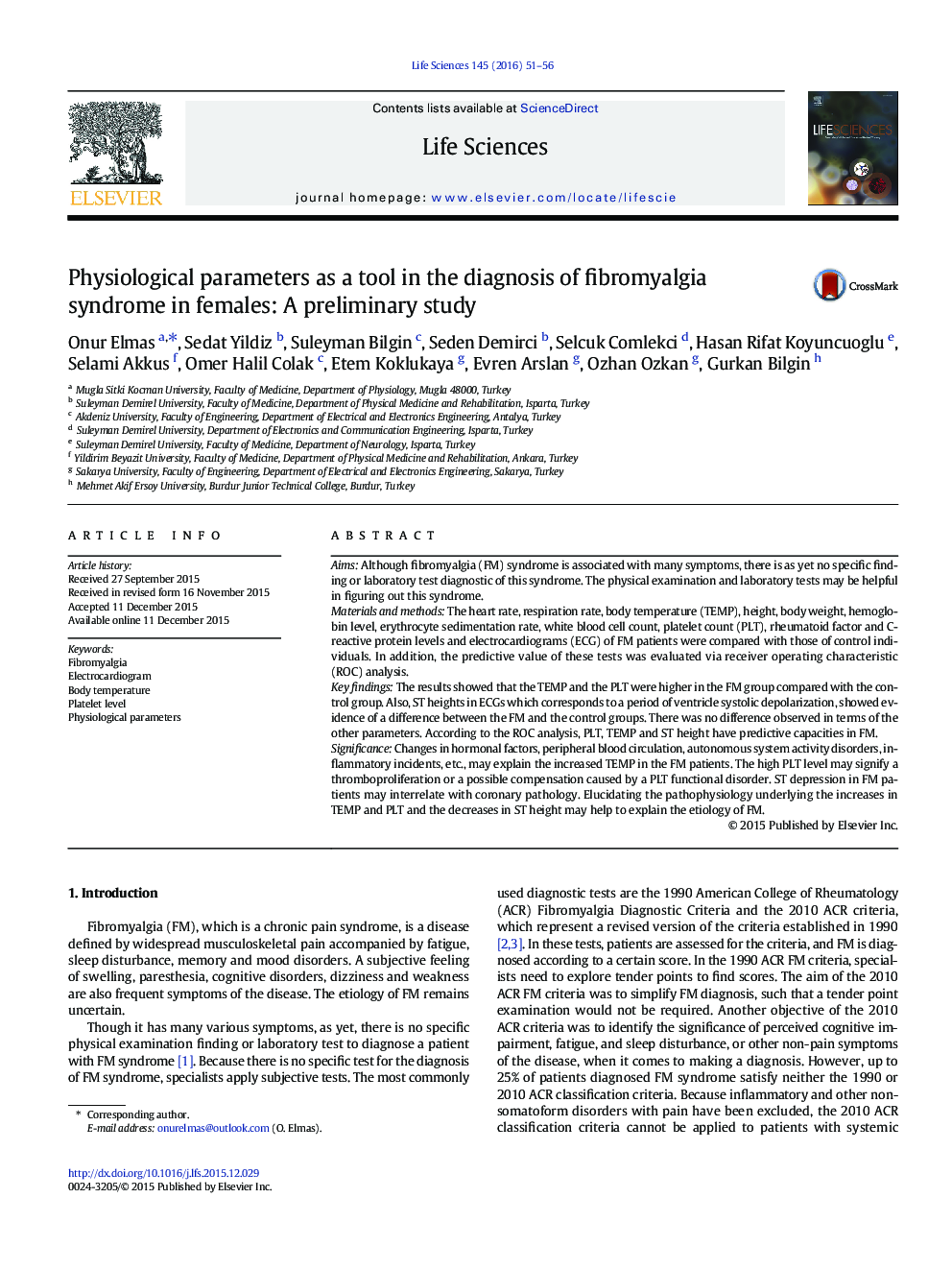| Article ID | Journal | Published Year | Pages | File Type |
|---|---|---|---|---|
| 5841497 | Life Sciences | 2016 | 6 Pages |
Abstract
Changes in hormonal factors, peripheral blood circulation, autonomous system activity disorders, inflammatory incidents, etc., may explain the increased TEMP in the FM patients. The high PLT level may signify a thromboproliferation or a possible compensation caused by a PLT functional disorder. ST depression in FM patients may interrelate with coronary pathology. Elucidating the pathophysiology underlying the increases in TEMP and PLT and the decreases in ST height may help to explain the etiology of FM.
Related Topics
Health Sciences
Medicine and Dentistry
Cardiology and Cardiovascular Medicine
Authors
Onur Elmas, Sedat Yildiz, Suleyman Bilgin, Seden Demirci, Selcuk Comlekci, Hasan Rifat Koyuncuoglu, Selami Akkus, Omer Halil Colak, Etem Koklukaya Etem Koklukaya, Evren Arslan, Ozhan Ozkan, Gurkan Bilgin,
